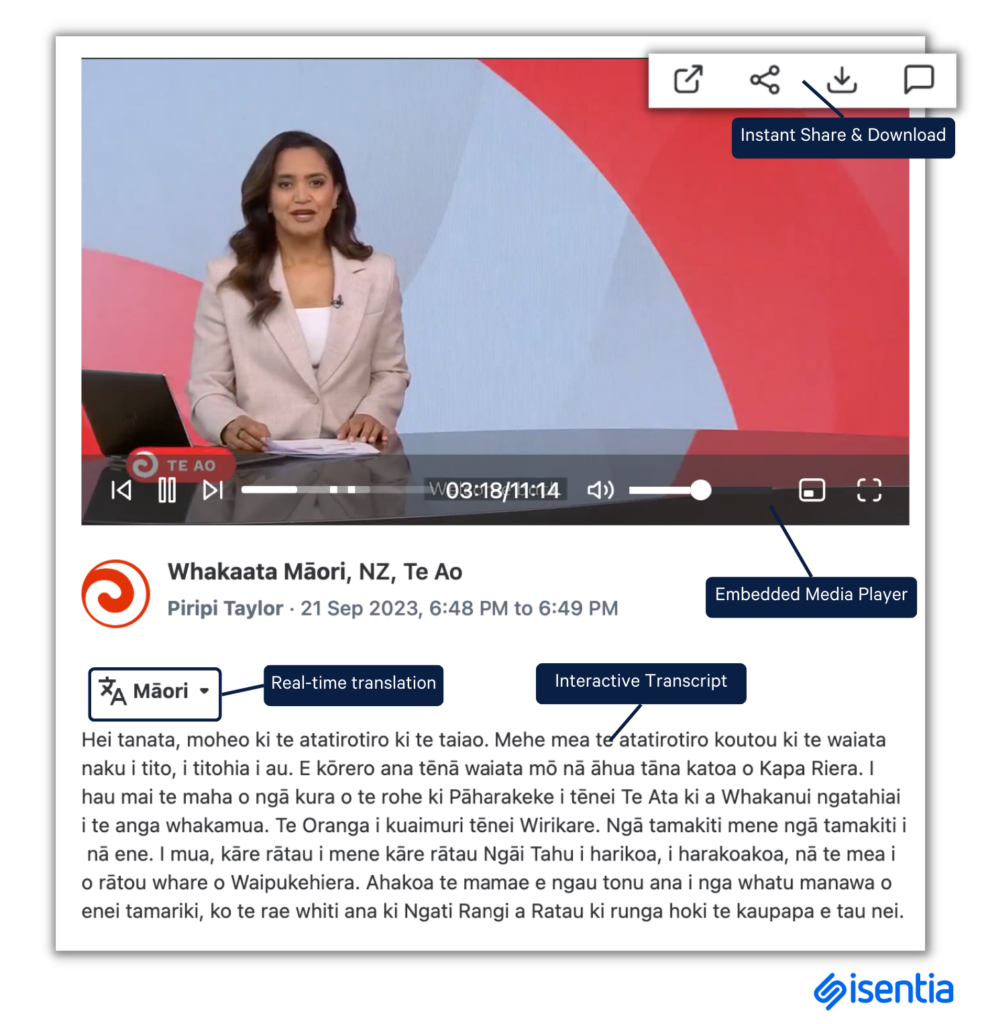Blog
The fundamentals of stakeholder strategy
A practical guide to tailored stakeholder management, offering strategies and tools to identify, map, and nurture relationships.

Hello everyone, I’m Raquel Climent, Commercial Director in Aotearoa and Australia, and I have some super exciting news to share! Today we’ve announced the launch of a market-leading AI-powered speech recognition service focused on Aotearoa’s Māori media. A first-of-its-kind, in fact!
After months of hard mahi, we’ve launched an all-new speech recognition capability within our TV and radio monitoring service that will enable greater accessibility of te reo Māori news content and programming.
From today, Isentia users will be able to get real-time translation of te reo to English from content across Whakaata Māori, Te Karere and Radio Waatea.
For a long time now I’ve been watching the Māori media landscape evolve and its audiences grow.
As an Aussie, I’ve spent 10 years here watching New Zealand’s appreciation of this national taonga grow and te reo usage day-to-day surge. Today, 30 per cent of New Zealanders speak more than a few words or phrases of te reo – a rise of six per cent from 2018.
It’s just one of the reasons why this project is very special to us here at Isentia. The ability to translate from te reo to English is all about accessibility, ensuring that Māori stories aren’t lost or ignored, and that your stakeholders can engage no matter where they are on their own language journey. Previously this hasn’t been easy.
We’ve developed our speech recognition capability, with a combination of Artificial Intelligence, and the support and involvement of some of our tangata whenua staff who speak te reo – and we’re very proud of that!
Like with any use of AI, humans have a vital role to play in its development. In this case, our own staff are helping us to ensure it is accurate, accessible and inclusive, now and ongoing.
It’s such an awesome milestone for us because it’s a significant investment in our New Zealand offering, and one that reflects our respect for te reo and hope that te reo programming will continue to thrive.
I feel certain that the new capability will guarantee our clients on both sides of the Tasman will have the best possible access to information and see the full picture of their news media landscape with the ability to detect key topics across New Zealand’s diverse media landscape (in both English and te reo).
We’re now looking at how we might apply this technology to a wider range of indigenous languages. It’s not just traditional media either – our sister company Pulsar is also applying the same speech recognition technology into its social media audience intelligence and listening platform.
Please take the time to experience the new functionality when you can. We welcome your feedback, and hope that like me you can see great potential with your own stakeholders and clients.

– Raquel Climent, Commercial Director |
Aotearoa and Australia
Loren is an experienced marketing professional who translates data and insights using Isentia solutions into trends and research, bringing clients closer to the benefits of audience intelligence. Loren thrives on introducing the groundbreaking ways in which data and insights can help a brand or organisation, enabling them to exceed their strategic objectives and goals.
A practical guide to tailored stakeholder management, offering strategies and tools to identify, map, and nurture relationships.
Across the communications landscape, teams are being asked to do more with less, while staying aligned, responsive and compliant in the face of complex and often shifting stakeholder demands. In that environment, how we track, report and manage our relationships really matters. In too many organisations, relationship management is still built around tools designed for […]
Get in touch or request a demo.